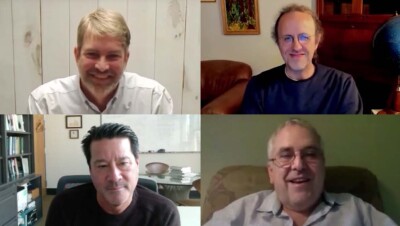
René Vidal, an Amazon Scholar who is the Herschel Seder Professor of Biomedical Engineering and director of the Mathematical Institute for Data Science at Johns Hopkins University, was recently awarded the 2021 Edward J. McCluskey Technical Achievement Award. Vidal was honored for “pioneering contributions to subspace clustering and generalized principal component analysis with applications in computer vision and pattern recognition.”
René Vidal Receives 2021 Edward J. McCluskey Technical Achievement Award
The award, first granted in 1985, is presented by the IEEE Computer Society for research done in the past 10 to 15 years that has led to “outstanding and innovative contributions to the fields of computer and information science and engineering or computer technology”.
Vidal, who joined Amazon as a Scholar in July 2020, noted that clustering in particular has been a focus of his research for quite some time. “That is a problem I was working on even at the time of my PhD back in 2003,” he said.
Clustering “deals with separating data into multiple groups without necessarily having supervision about what those groups mean,” Vidal explained. Clustering frequently entails situations dealing with high dimensional data where inputs can consist of hundreds or thousands of features as, for example, in medical imaging, where the sheer volume of data makes it difficult to extract useful information.
“Suppose we’ve got unlabeled data that we want to separate into multiple groups. One example is pictures of different individuals without having a tag or a label for every picture. Suppose you just want to separate them into many groups, and ideally you would like these different groups to correspond to different individuals.”
Subspace clustering
Subspace clustering finds clusters within high dimensional data by making assumptions about the structure of those groups. “The assumption we make in subspace clustering is that all of the data that comes from one group can be well approximated by one subspace and that different groups come from different subspaces.”
Vidal said the award also recognizes the work he and several PhD students have done in other areas of subspace clustering, as well as the community that sprang from those efforts.
“Beyond the work done during my PhD, the award also recognizes a second family of subspace clustering methods based on sparsity. This work was done in collaboration with my former students Ehsan Elhamifar [an assistant professor at Northeastern University] and Chong You [a research scientist at Google], whose work contributed to making the methods robust to corruptions in data as well as scalable to millions of data points. The work became influential as many people began to work in this area of exploiting subspace structure to do clustering and a community of researchers was created little by little.”
Vidal was nominated for the award by Rama Chellappa, a Bloomberg Distinguished Professor in electrical and computer engineering and biomedical engineering and chief scientist at the Johns Hopkins Institute for Assured Autonomy.
“I have followed Rene’s outstanding contributions in computer vision and machine learning and felt that he is very deserving of this recognition,” Chellappa said.
Vidal, who is also a chief scientist at NORCE, the director of the NSF-Simons Collaboration on the Mathematical Foundations of Deep Learning, and the director of the TRIPODS Institute on the Foundations of Graph and Deep Learning, received his bachelor’s degree in electrical engineering from the Pontificia Universidad Católica de Chile in 1997, and his master’s degree and PhD in electrical engineering and computer science from the University of California at Berkeley.
Joining Amazon
Vidal, who works in Visual Search and Augmented Reality at Amazon, said he was intrigued by the opportunity to apply his research to real-world challenges.
“As someone who is still in academia — at Johns Hopkins I work in AI, computer vision, and machine learning — we’re always excited to produce new work in our domains of expertise, new algorithms that are going to take data and use data in ways that are very useful and highly innovative. There’s been a wave of AI being used by all major companies, and among those companies I feel Amazon is the one closest to my heart in that I feel impacted by it on a daily basis.”
The fact that you can use AI and the type of research I do on a daily basis in academia to actually have that level of impact worldwide was a big attraction.
Vidal said the chance to have an impact at scale was also a draw. “I’ve always been a fan of Amazon because it has a huge impact on people’s lives. The fact that you can use AI and the type of research I do on a daily basis in academia to actually have that level of impact worldwide was a big attraction.”
His work at Amazon focuses on improving the mobile shopping experience. “My expertise is a great match to what my team does. I am in visual search and they are responsible for the entire shopping experience with a mobile phone camera.”
His team’s current focus is on customers looking for furniture, and Vidal said he is intrigued by what lies ahead. “Essentially my job is to develop machine learning and computer vision algorithms that help customers purchase via interacting with the phone’s camera. I’m particularly focused in the furniture and room decoration space. Everything coming in the future in this area is something that I’m very excited by.”







